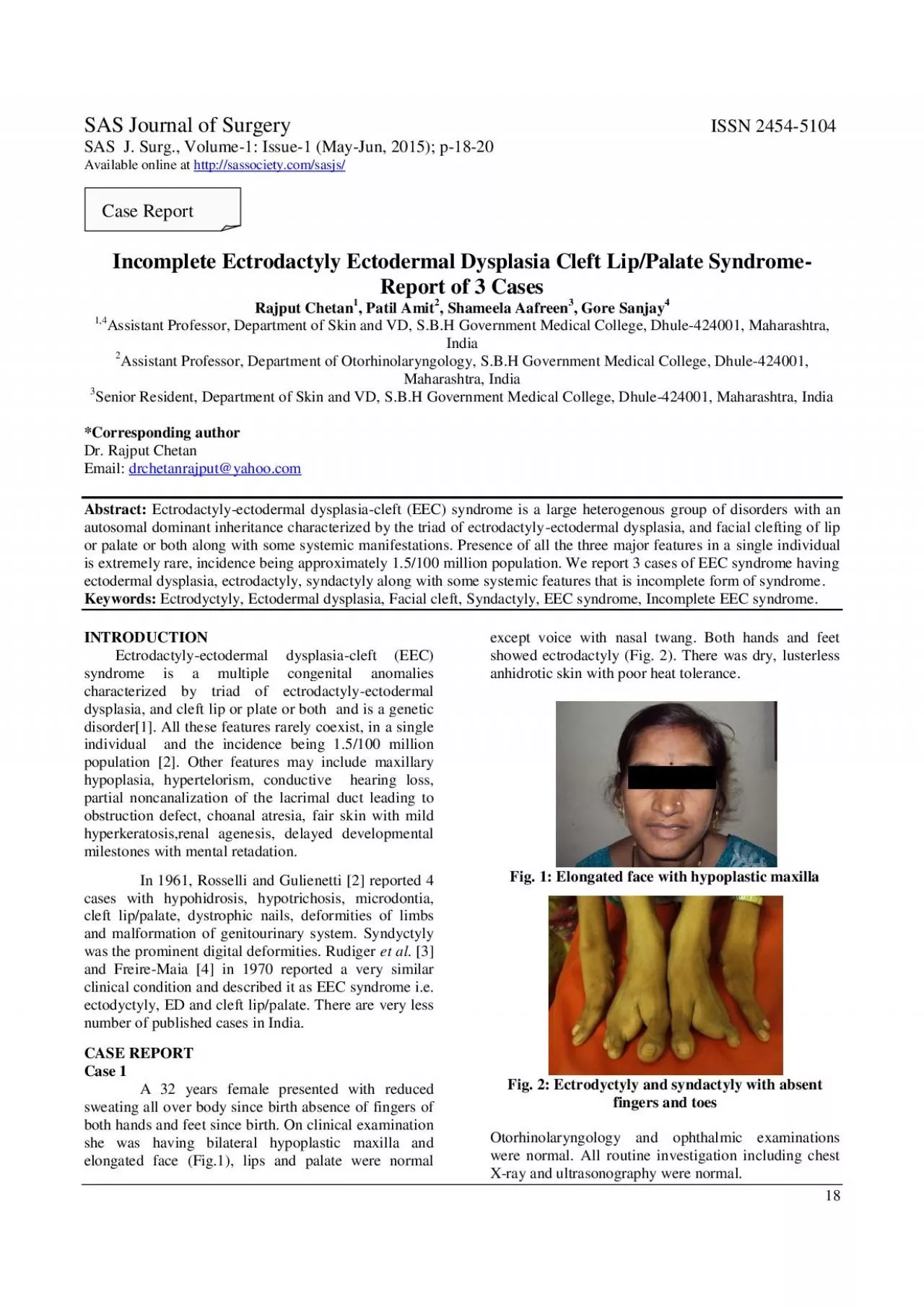PDF-SAS Journal of
Author : anya | Published Date : 2022-09-07
18 Surgery ISSN 2454 5104 SAS J Surg Volume 1 Issue 1 May Jun 2015 p 1 8 20 Available online at httpsassocietycomsasjs Incomplete Ectrodactyly Ectodermal
Presentation Embed Code
Download Presentation
Download Presentation The PPT/PDF document "SAS Journal of" is the property of its rightful owner. Permission is granted to download and print the materials on this website for personal, non-commercial use only, and to display it on your personal computer provided you do not modify the materials and that you retain all copyright notices contained in the materials. By downloading content from our website, you accept the terms of this agreement.
SAS Journal of: Transcript
Download Rules Of Document
"SAS Journal of"The content belongs to its owner. You may download and print it for personal use, without modification, and keep all copyright notices. By downloading, you agree to these terms.
Related Documents














